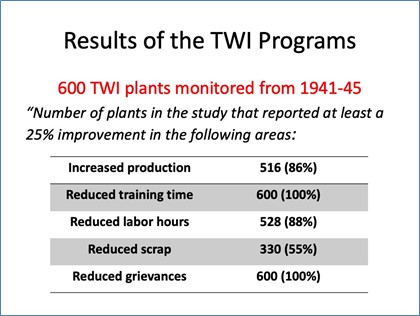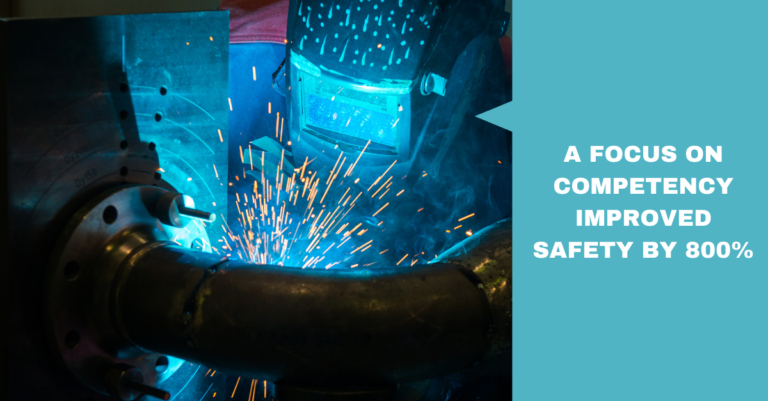Competency 101 – Part 1 … What the Heck are Competencies?
Jeff Griffiths, WorkForce Strategies International
The quality movement that caught hold in organizations through the 1980s spawned many different variations on process-based methods for improving organizational performance. Including the various ISO 900x standards in manufacturing, the Capability Maturity Model –Integrated (CMMI: originally created for military software engineering development and integration, but since extended to other sectors), Motorola’s “six-sigma” approach, lean enterprise approaches based on the Toyota Production System, and others. These approaches are all characterized by an underlying belief in a machine paradigm of organizations, which essentially takes as gospel that if performance is not optimal, then the problem must lie in the processes. According to this paradigm, if you fix the processes, achieve standardization, and remove variance, then performance will improve. Countless organizations have embarked upon improvement journeys based on this paradigm, and many of them have achieved performance improvements, but the literature suggests that few are entirely satisfied with the results (Burton & Boeder, 2003 pg 34; Burton & Sams, 2005, pg.143).
The missing link in most process-based improvement models is people – more specifically, the competencies of the people who execute the processes. Logically, the most sophisticated processes in the world are pointless unless organizations have the workforce capability to consistently and effectively apply – and improve – those processes in an evolving and dynamic business environment. Without improving the organization’s practices in relation to its people, and improving the overall competency of the people in the organization, any improvements brought about through business process-based initiatives will be less than they could be, and ultimately won’t be sustainable. The “death spiral” of improvement efforts results from a focus on the processes instead of the people.

Our practice is based on the principle that organizational performance involves three interconnected elements, which we represent as three interlocking circles: achieving the task, building (and maintaining) teams, and developing individuals. A focus on the latter two elements creates the conditions that allow tasks (i.e., the business of the organization) to be achieved optimally. My experience, both in my first career as a military officer and in my work in the private sector over the last 25 years has shown that those organizations that maintain a focus on the elements of the building and maintaining teams and developing individuals on those teams will be significantly more successful. In essence, the investment in the bottom circles pays dividends in the top circle. Basically – competency drives bottom-line performance.
Intrinsically, everyone knows this – and yet surprisingly few managers put the emphasis on competencies in their business. Why not?
In this first post of a series on competencies, we’ll start with some basic principles.
Describing Work – What do People DO?
Part of the problem with using competencies in business may be the language used. Competency, competencies, skills, tasks… many different terms are used, often interchangeably, to describe what people do and how they do it. Let’s deconstruct that…
“Skills” are learned capacities that enable an individual to do particular things (learned behaviours). Skills describe things that people can do, but in a non-specific way; that is, there is no context for where and how skills are applied, or the outcomes when they are applied.
| Skills | the mental and physical abilities to apply knowledge. |
Skills are important building blocks for performance, but without the context of work, they have little meaning. Throwing a ball is a skill. “Sally can throw a ball” tells you something, but without knowing why Sally is throwing the ball, or what the result of Sally’s ball throwing is, we’re really not well informed.
“Tasks” are one way of putting skills into a work context.
| Tasks | specific, observable units of work that are complete in themselves (having a definite start and endpoint), that can be broken down into two or more steps (sub-tasks), can be performed in a limited period of time, and when completed results in a product, service or decision |
Tasks are more useful for describing what people do, and they include some work context. If throwing a ball is a skill, then applying that skill to strike out a batter in a baseball game could be considered a task.
“Competencies” however, are a more useful way of looking at what people do.
| Competencies | groupings of related behaviours that describe successful performance in a designated situation or context. They integrate knowledge, skills and other attributes that an individual must possess to be effective within that context. |
To follow the baseball analogy, striking out an opposing batter is a task. Striking out the last opposing batter in the 9th inning of a game with the bases loaded and your team leading by a run – THAT’s a competency.
See the difference?
Understanding work – defining the critical competencies that make up a job – is the first step in improving organizational performance. If you’re a manager, do you think in terms of skills? Tasks? Competencies? I’d love to hear how your organization is approaching this critical element – let me know by leaving a comment below.
Read With Us
If you found this information useful, please subscribe to be notified for our next great post.








Really good point!